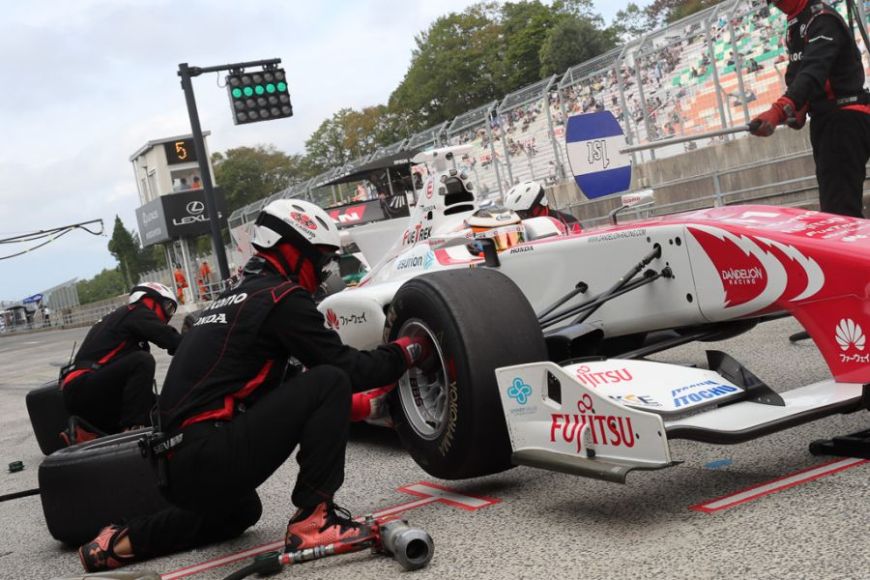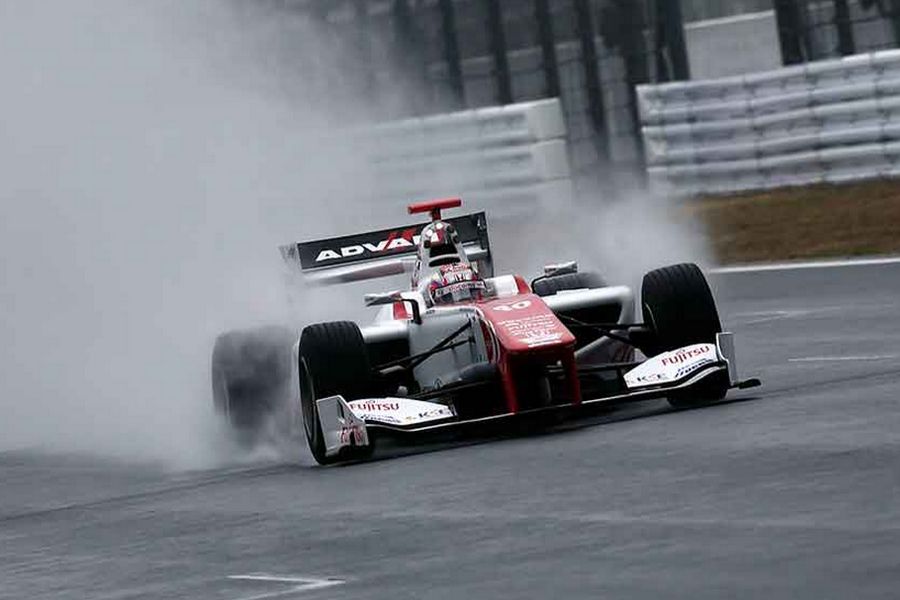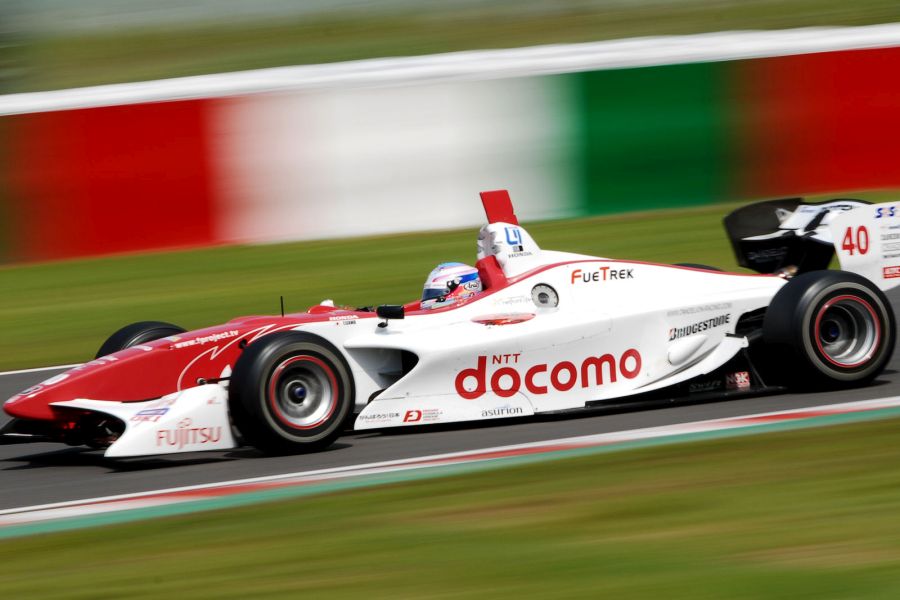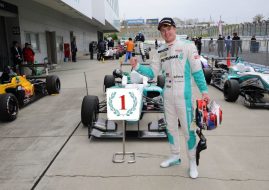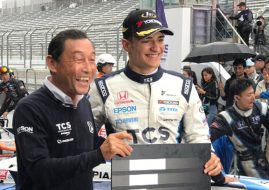Dandelion Racing - Super Formula regulars since 1999
Dandelion Racing is a Japanese racing team, founded by Kiyoshi Muraoka in 1989, which currently competes in the Japanese Super Formula Championship. The team achieved the best results in Formula Nippon, winning the drivers’ championship title with Richard Lyons in 2004 and the teams’ championship title in 2012.
Kiyoshi Muraoka founded a team in 1989, naming it the Dandelion Racing Project. For its racing debut, the team signed a sponsorship contract with a Japanese telecommunication company NTT DoCoMo. That relationship is still active today.
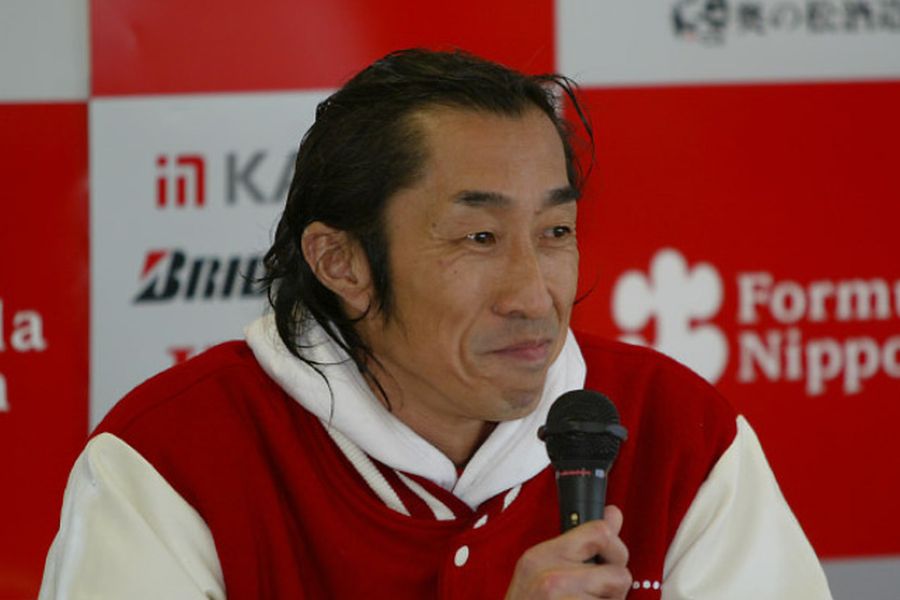
Kiyoshi Muraoka
Dandelion Racing’s first competition was Formula 3
The first competition for the team was the 1993 Japanese Formula 3 Championship, with Kashin Oomiya as the first driver. He didn’t score any point in ten races. In 1994, the Australian driver Benjamin Kerr was driving for Dandelion alongside Masayuki Yamamoto, but they failed to score points again.
Four JTCC seasons with Toyota
In 1995, the team switched to the Japanese Touring Car Championship, staying in the series for four seasons. Hideo Fukuyama and Masayuki Yamamoto were driving the #68 Toyota Corolla AE101, scoring poor results. In 1996, Tetsuya Tanaka was the only driver of the #68 Toyota Corona ExiV, finishing 19th in the standings with one point on his account. In 1997, Tanaka managed to score points in six races, finishing 15th in the final standings.
The 1998 season was the final season of JTCC. Dandelion Racing’s #68 Toyota was driven by Argentinean Ruben Derfler, who scored a maiden podium for the team in the last race of the season, finishing second at Fuji Speedway. He was 8th in the final standings.
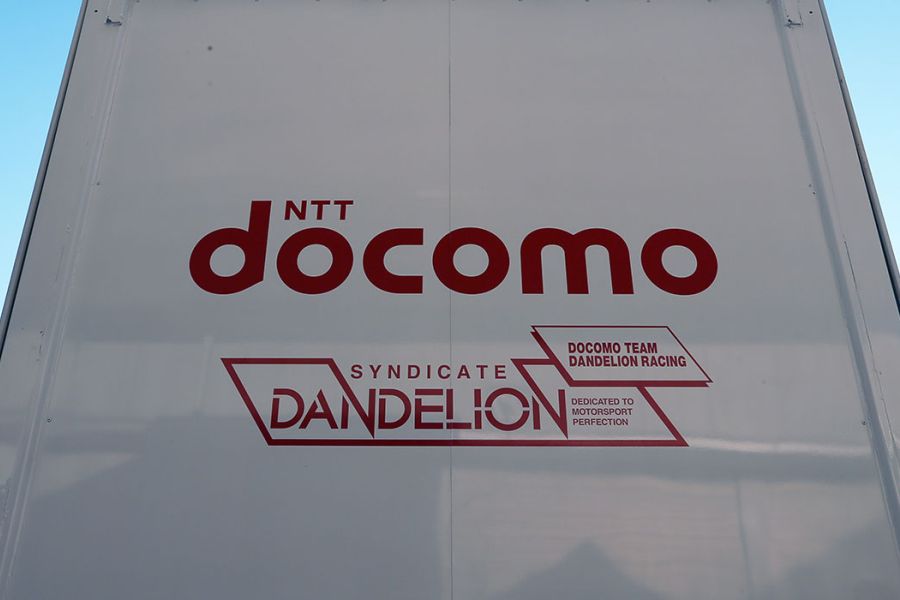
NTT docomo is the main sponsor of Dandelion Racing since the beginning
1999 – entering Formula Nippon and switching to Honda
In 1999, the team switched from the defunct JTCC to Formula Nippon, also changing a manufacturer and joining a grid as one of the Honda-Mugen teams. Ruben Derfler stayed with the team in the #68 Reynard. He scored no points through a season.
Ryo Michigami joined the team in the 2000 Formula Nippon season. He was close to the points few times but his scored at the end was – zero. In 2001, Dandelion expanded to two cars, with Hideki Noda in the #68 Reynard-Mugen and Polish driver Jaroslaw Wierczuk in the #69. In the last round, Wierczuk was replaced by Hidetoshi Mitsusada. For the third year in a row, the team scored no points.
Richard Lyons joined Dandelion in 2002
The fortune changed in 2002 when Richard Lyons joined the team from the third round of the championship. In the first two rounds, Jonathan Cochet was driving the #68 car. Lyons scored a podium in his fourth race with the team, finishing second at Sportsland Sugo. At the end of the season, he was 10th in the points.
The first ever victory for the team followed in the fifth round of the 2003 season, at Suzuka Circuit. Lyons won the race in the #40 Lola-Mugen. The team again had a second car, the #41 for Naoki Hattori. With one victory and two podiums, both at Motegi, Lyons finished sixth in the championship. Without wins or podiums, Hattori was 13th in the points.
Richard Lyons – 2004 Formula Nippon champion
And then, in 2004, the most successful season in the team’s history followed. Richard Lyons scored his first win of the season in the second round, at Sugo. He added one more win (Suzuka) and two podiums in the last two races, winning the championship title tied in the points with Andre Lotterer.
Naoki Hattori also scored one podium with #41 car, at Sepang Circuit, contributing to the third place in the teams’ championship standings. Hattori himself was ninth in the points.
Lyons stayed with the team in 2005
With number 1 on his car, Richard Lyons stayed with the team in 2005. Naoki Hattori was in the #2 Lola-Mugen. Lyons opened a season with a victory at Twin Ring Motegi but it remained his only triumph and he finished third in the points. Hattori scored one podium to finish 12th. In the team’s standings, DoCoMo Dandelion was in the second place.
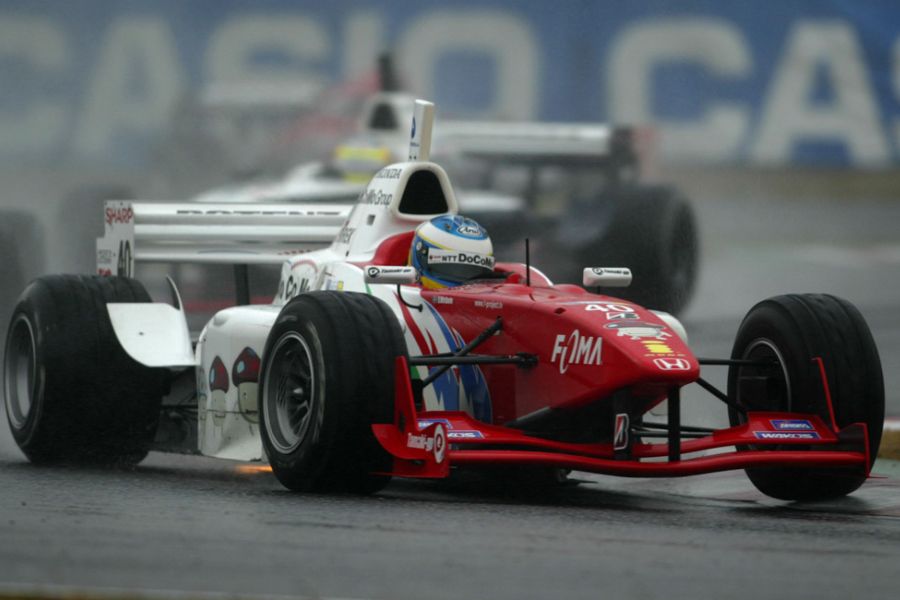
Bjorn Wirdheim spent two seasons with Dandelion Racing
Bjorn Wirdheim joined Dandelion in 2006
In 2006, the team returned to its old numbers, with Bjorn Wirdheim in the #40 car and Katsuyuki Hiranaka in the #41 car. From the fourth round, Yuji Ide jumped into #41 car. The best result was Wirdheim’s second place at Suzuka and he finished 6th in the points.
The Swedish driver remained in the #40 car in 2007, with Brazilian Fabio Carbone as a new teammate in the #41 car. It was another winless season, with just one podium for Wirdheim, who finished ninth in the points, six places ahead of Carbone.
Matsuura won one race in 2008
Another change of drivers’ line-up followed in 2008, with two Japanese drivers in Dandelion’s cars – Kosuke Matsuura and Takeshi Tsuchiya. The results were disappointing through a season, but Matsuura surprisingly won the penultimate race of the season at Fuji Speedway.
It didn’t help him much to improve his overall result, as he finished 18th in the final standings, one place behind teammate Tsuchiya. Dandelion Racing was in the last place among eleven teams.
Richard Lyons was back in 2009
Richard Lyons rejoined the team in 2009 to drive the #40 Swift-Honda, with Takuya Izawa as a teammate in the #41 car. Both drivers scored one podium each. Izawa finished 8th in the points, Lyons was tenth.
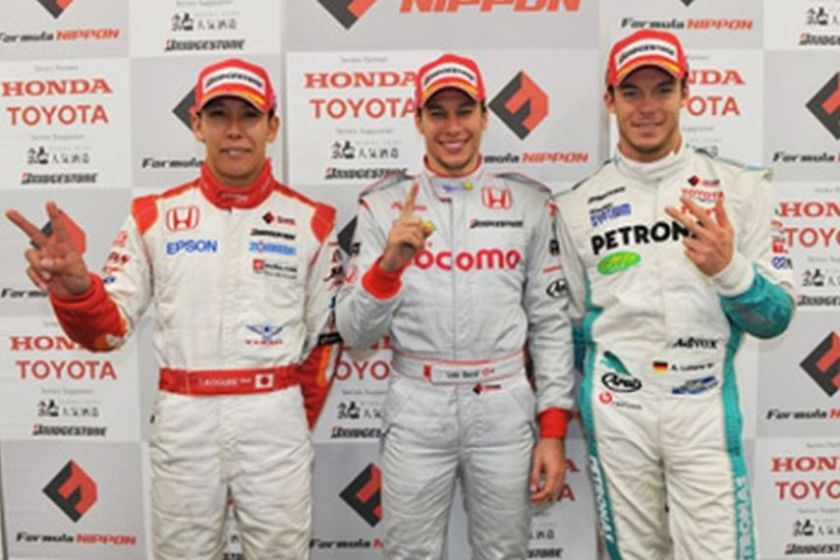
Loic Duval (in the middle) has won two races with Dandelion Racing
Reigning champion Loic Duval joined Dandelion in 2010
For the 2010 Formula Nippon season, the reigning champion Loic Duval joined Dandelion Racing, so the team again had #1 car. Takuya Izawa was in the #2 car. Duval was the winner two times, finishing third in the championship standings. Izawa’s best race result was fourth place and he finished 11th in the points.
In 2011, Takuya Izawa remained with the team for the third year in a row. Duval left the team, being replaced by Koudai Tsukakoshi. He scored two podiums and finished fourth in the final standings. Izawa was less successful, finishing ninth in the points. In the teams’ standings, they were third.
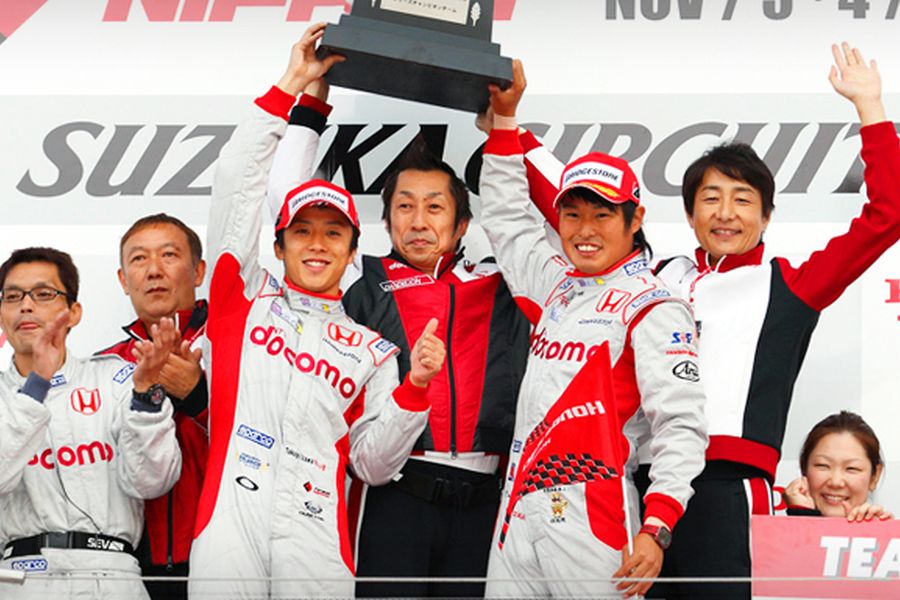
2012 Formula Nippon champions
2012 Formula Nippon title for the team
In 2012, Takuya Izawa and Koudai Tsukakoshi were the parts of the victorious combination. They scored three championship wins together (two Izawa, one Tsukakoshi) and won the championship title for the team. Izawa was also the winner of the non-championship round at Fuji Speedway.
In the drivers’ standings, Kazuki Nakajima won the title, beating Tsukakoshi for five points. Izawa finished in the third place.
2013 – Izawa’s fifth season with the team
In 2013, the series was renamed to the Japanese Super Formula Championship. Takuya Izawa started his fifth season with Dandelion Racing winning the season-opening race at Suzuka Circuit. Later in the season, he scored no wins or podiums, finishing 7th in the points. The second driver in the #41 car was Hideki Mutoh. His best race result was 10th place and he finished 20th in the final standings.
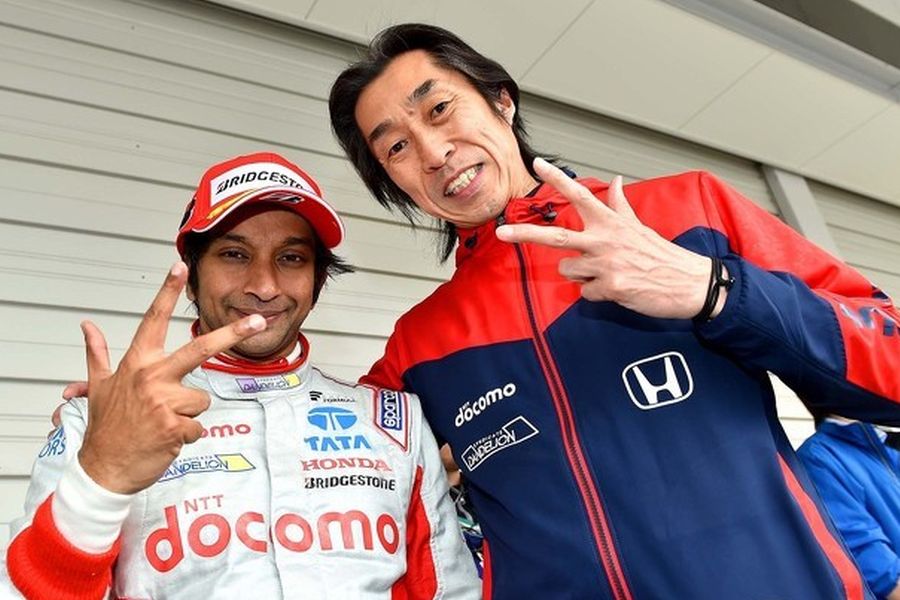
Narain Karthikeyan and Kiyoshi Muraoka
Tomoki Nojiri in the team since 2014
For the 2014 Super Formula season, the team retained Hideki Mutoh in the #41 car. Tomoki Nojiri joined Dandelion to drive #40 Dallara-Honda. Nojiri won the race at Sportsland Sugo, finishing 10th in the points. Hideki Mutoh was again far behind, in the 15th place in the final standings.
For the 2015 season, Mutoh was replaced by former F1 driver Narain Karthikeyan. Nojiri was on the podium two times, ending a year seventh in the points. For the Indian driver, the best result was third place in the season-opening race at Suzuka Circuit. He finished 11th in the final standings.
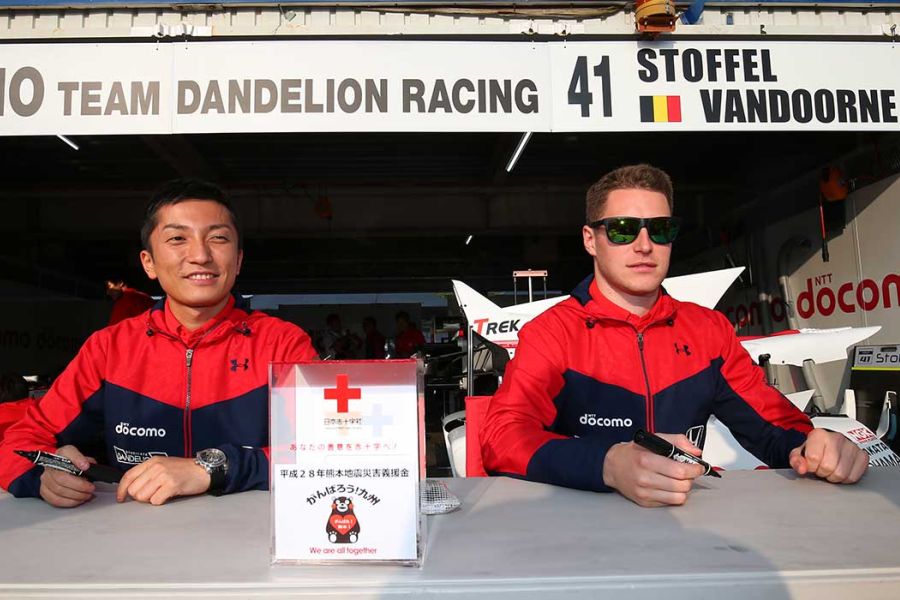
Tomoki Nojiri and Stoffel Vandoorne in 2016
Stoffel Vandoorne scored two wins with Dandelion
In 2016, GP2 Series champion and McLaren-Honda F1 team’s reserve driver Stoffel Vandoorne joined Dandelion Racing to spent one season in the Japanese premier single-seater competition before entering Formula One in 2017. Tomoki Nojiri stayed in the #40 car.
After a season-opening podium at Suzuka Circuit, Vandoorne captured first win in the fifth round at Okayama International Circuit. The second win came in the season’s finale at Suzuka. Vandoorne finished fourth in the final standings. Tomoki Nojiri, with one podium on his account, finished ninth in the points.
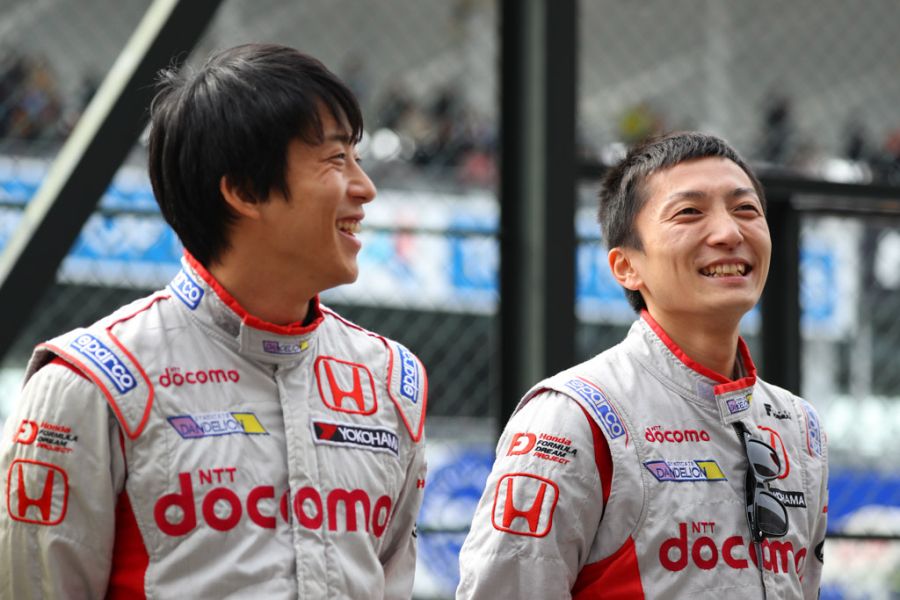
Takuya Izawa and Tomoki Nojiri
Nojiri and Izawa together again in 2017
For the 2017 Super Formula season, DoCoMo Team Dandelion Racing signed Tomoki Nojiri for the fourth season in a row but also resigned Takuya Izawa, who returned to the team after he left in 2014. It would be his sixth season with Kiyoshi Muraoka as team boss.
Photos: dandelion-racing.com, motorsport.com, honda.co.jp, autoracing1.com


